Kristen Lamb's Blog, page 41
May 31, 2016
Botched Beginnings—Common First-Page Killers

We can Twitter ’til we flitter and Facebook ’til we face plant and that won’t matter much in the greater scheme of things if we fail at our single most important job—writing a great book. Our single greatest challenge is to hook the reader hard enough to buy (and then read) our novel.
Sales ultimately are impacted by reviews and if no one reads and no one finishes?
Exactly.
Yes, covers are important and social media is vital, but those sample pages can mean the difference in No Sale and Big Hit.
One writing book every writer should have is Hooked by Les Edgerton. I think this was the first craft book that truly woke me up and showed me all I really didn’t know about writing.
As a new author, there were far too many elements I believed were important when in reality? Not so much. Additionally, because I was focusing on the wrong “stuff” I was failing to develop the “right” stuff.
What I love about Hooked is how Les demonstrates how all the factors that go into making great beginnings don’t just evaporate. These are tactics we must keep employing throughout the work to keep the reader engaged and turning pages. Our job is to obliterate sleep, to send our readers tired and grouchy and over caffeinated to work…but ultimately satisfied.
Let’s talk about some common ways beginnings fall flat.
The Writer is Easing Into the Story
Nope. I can’t tell you how many times I’ve had writers wail, “But you don’t understand! The story really starts on page 50.”
Okay, then cut off 49 pages and you’re golden.
Modern audiences simply don’t have the attention span for us to go on too long. Yes, I get that the authors of yesteryear got away with this, but they were competing against shoveling manure and shoeing horses, not YouTube, Facebook and 24-hour entertainment. Additionally, writers back in the day were often paid by the word, so that sucker was padded worse than a freshman term paper.
These days we need to get to the point as quickly as possible and fiction is about one thing and ONE thing only. Problems.
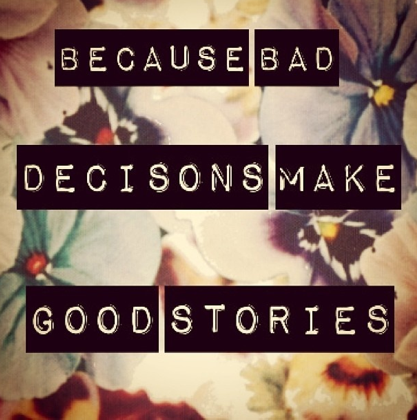
Readers Don’t Need a Set-Up…Really
We writers can be really guilty of brain-holding. Readers are smart. Really. We don’t need to go ten or twenty or fifty pages to “set up” the story problem so the reader doesn’t get lost.
Even Andy Weir’s The Martian begins with:
I’m pretty much f**ked.
That is my considered opinion.
F**ked.
Six days into what should be the greatest two months of my life, and it’s turned into a nightmare.
Weir doesn’t start with the crew landing on Mars and bonding and working to “set up” the sandstorm that strands Watney on Mars. He starts right in the guts of the problem and we (readers) keep up just fine.

We Don’t Care Why
Often new writers will begin a novel with a lot of telling and flashbacks in an effort to explain why a character is a certain way. We don’t care. That is the realm of psychotherapy, not fiction. Want to see who a person (character) really is? Toss them into a problem.
Sure, later in the story we can divulge the character was abused or abandoned or whatever, but the beginning is not the place for that. Yes, we eventually know that Connelly’s character Detective Hieronymous Bosch grew up an orphan after his mother (a prostitute) was murdered. We eventually find out that these circumstances fueled Harry’s choice in occupation and even his world view. But the Bosch books never begin with this. That is for later.
Why?
Because the past is in the past and cannot be changed, therefore it is not a story worthy problem. It is a bad situation, not true drama.
In fact, we as the writer need to know these details, but sharing them might not always be a good thing.
Hannibal was far more interesting before he was explained.
Readers are perfectly fine with meeting a fully formed character (flaws and all) and just rolling with it from there. In fact, the wondering why a character thinks or acts a certain way often drives the reader to turn pages hoping that it eventually will be explained.
Inner Demons

My previous point dovetails nicely into inner demons, which we will explore in another post for sake of brevity. I get a lot of novels that begin with thinking and more thinking and waxing rhapsodic over “inner demons.” Here’s the deal, we don’t like people who go on and on about their personal problems and character flaws in real life. Why would we pay to endure that in print?
Fiction is therapeutic, but it isn’t therapy.
Remember that we are using the story problem to make the reader care about the protagonist. If we jump the gun too soon and start dumping a lot of emotional baggage on the reader, she is going to feel like she is trapped in the checkout line with that stranger who feels the need to share details of her ugly divorce.
We have to earn the privilege of the reader caring.

Beginning with thinking and internalization presents a structure problem as well. Internalization is part of what is called a sequel. Sequels can only happen as a direct consequence of a scene. Scenes are action and goal-oriented. All fiction begins with a scene (problem/conflict).
Outer Problems Versus Inner Problems

Humans feel far more comfortable with outer problems (initially) and it is what draws us in. If you have ever visited a major city like NYC, then think of it this way.
On the sidewalk there are countless faceless people.
If we notice someone crying? We might (big on the might) get involved, but we wouldn’t feel very comfortable. If, however, a person is carrying a briefcase and the latches give way spilling out the contents? Most of us wouldn’t think twice about helping the person gather her papers.
We also would feel far less weird if after we helped gather the papers, we “found out” the person was discombobulated because she was upset over a personal problem (was just fired). We might even want to know more because we’ve established enough report to activate empathy.
This is the difference in using an outer problem to hook versus inner drama.
Good fiction goes right to a tangible outer problem.
Beginning with Melodrama
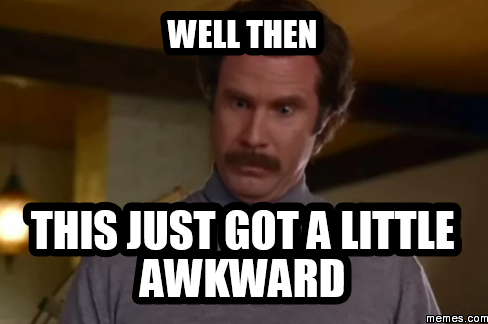
Any time I see a book that opens with a funeral, a death, a hospital scene, I cringe. This is going to sound cruel, but we really just don’t care. If we have not been introduced to the characters who are clinging to life or recently deceased? We have nothing emotionally vested and so sections like these are just tedious.
***This goes along with a protagonist starting things off by relaying her abuse history as a child.
And the more the writer tries to amp up the “feelings” the weirder it gets for the audience.
I get that the story might be prompted by a death or a tragic event, but there is no reason to drag us along if we don’t know the dearly departed.
Remember that even in Star Wars, we did spend at least a little time with Uncle Owen and Aunt Beru before they were butchered. If the story would have started there? It would have just been weird.
There are a lot of other things that go into crafting excellent beginnings, but we will talk about those another time. I am trying something new, though. Thursday, June 16th I am holding a Battle of the First Pages. If you’ve ever been to a conference and to an agent gong show, this will be similar.
I will upload your first page in the W.A.N.A. virtual classroom (all you need is internet and pants are optional) and will read until the point I would have stopped (or, conversely, where I am hooked). Then we will parse the first page sample for what the writer did well or what could be done better. Sign ups are limited but it is only $25 for two hours of fun and games and the recording is provided for free with purchase.
Anyway, I do love hearing from you! What are your thoughts, opinions, questions regarding beginning?
To prove it and show my love, for the month of MAY, everyone who leaves a comment I will put your name in a hat. If you comment and link back to my blog on your blog, you get your name in the hat twice. What do you win? The unvarnished truth from yours truly. I will pick a winner once a month and it will be a critique of the first 20 pages of your novel, or your query letter, or your synopsis (5 pages or less).
Upcoming Classes
All W.A.N.A. classes are on-line and all you need is an internet connection. Recordings are included in the class price.
Again, I am trying something new and offering an open and interactive workshop. Is your first page strong enough to withstand the fire?
June 16th, 7-9 EST. Cost $25
This is an interactive experience similar to a gong show. We will upload the first page and I will “gong” when I would have stopped reading and explain why. We will explore what each writer has done right or even wrong or how the page could be better. This workshop is two hours long and limited seats available so get your spot as soon as you can!
June 17th, 7-9 EST. Cost is $35
Just because we made As in high school or college English does not instantly qualify us to be great novelists. Writing a work that can span anywhere from 60,000 to 120,000+ words requires training. This class is for the person who is either considering writing a novel or who has written a novel(s) and is struggling.
We will cover the essentials of genre, plot, character, dialogue and prose. This class will provide you with the tools necessary to write lean and clean and keep revisions to a minimum.
For those who need help building a platform and keeping it SIMPLE, pick up a copy of my latest social media/branding book Rise of the Machines—Human Authors in a Digital World on AMAZON, iBooks, or Nook.


May 25, 2016
How to Write Mind-Blowing Plot Twists—Twisting is NOT Twerking

Okay so on Monday I talked about 3 Mistakes that Will Make Readers Want to Punch a Book in the Face. One of the mistakes involved the twist ending. Very often a writer believes she has written a twist when in fact, it is NOT a twist at all, it is a twerk.
Twisting the reader? YES. Twerking the reader? NO.
You’ve heard the literary term MacGuffin? For the sake of a simple analogy, I’m adding a new one and it is called a MacGyver
May 23, 2016
3 Mistakes that Will Make Readers Want to Punch a Book in the Face

To do my job well, I do a tremendous amount of reading. Additionally, I make it a point to make sure I read different genres so I get a sense of what writers do well (or not so well) regardless of the type of story.
I’ve been inhaling Michael Connelly’s Harry Bosch series as of late and I got ahead of my credits so I decided instead to take advantage of Audible’s Daily Deal. It was a suspense from a legacy published author. The book had almost a thousand reviews and almost all of them four and five stars. So I figured, why not?
Take a chance.
Shoot. Me. Now.
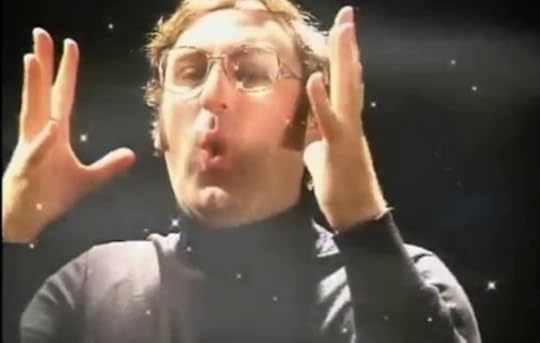
That was me.
The book was absolutely awful. I won’t say which book because I won’t do that to another author. I have a personal rule. If I can’t give a book 4 stars or more I just shut up. Three would be the minimum. Since this one was a solid TWO? Yeah, just shutting up.
And FYI, I was beginning to think I was being too hard on the book but then went and looked at the handful of bad reviews and they complained about the same things…so I had NOT lost my mind.
Anyway…
I kept listening, thinking, “Seriously, this has GOT to get better.” It didn’t. So instead of just complaining about the hours I wasted getting dragged through this awful book, I figured I could harvest it for some lessons about what mistakes we can avoid.
Mistake #1—Protagonist Too Dumb To Live

Our protagonist doesn’t need to be likable. There are all kinds of examples of this in literature and movies. Often anti-heroes are pretty despicable folks. We simply need a way to emotionally connect with this character, to empathize. Often this is done by making a character’s goal empathetic (I.e. Breaking Bad) even if the means are ugly, or by juxtaposing this character against a greater evil (I.e. Pulp Fiction).
This said, our protagonist doesn’t need to be likable, but we as readers have to respect them. When characters are too dumb to live, it doesn’t matter how good or noble the cause we don’t care.
In the book I was reading the protagonist was in a bad crash and is suffering from amnesia. She awakens to realize someone close to her has been brutally murdered and she is the #1 suspect.
Over the course of this plot that moved with the momentum of frozen maple syrup, this character “remembers” that her sister who has been taking care of her on their isolated farm since the accident…is actually a violent sociopath.
She is assaulted with visions of this sibling very literally torturing her growing up (including one scene where the sister kills a cat slowly and makes her watch). Though she hasn’t remembered everything, any person with one eye and half sense, might at least come to the reasonable conclusion that perhaps the sister murdered this loved one and is now framing her.
Everyone but the protagonist apparently.
What does she do? She decides to return back to the isolated farm unarmed without telling anyone (even the cops) to confront her sister about her memories.

WHYYYYY?
I get that characters should not be predictable. But they should NOT do stupid stuff simply because we need to move them to a certain “place.” Because devoid of any threat (I’m holding your best friend hostage and you better come alone. No guns and no cops) it just made this character a Class A Moron.
If her sister didn’t kill her, I wanted to.
Mistake #2—Protagonist is Passive
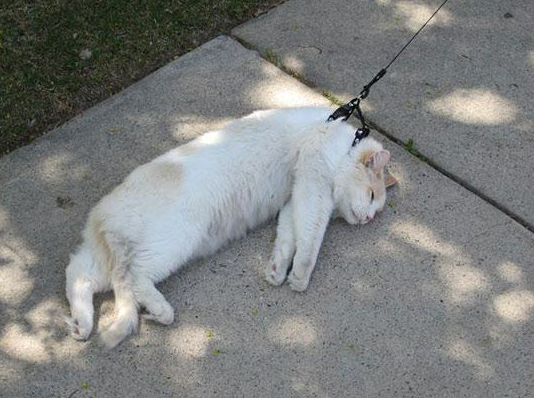
The protagonists needs to be proactive, meaning actively going after a goal. This is one of the reasons passive goals really don’t work in fiction. It also needs to be something the character earns. Frankly, I knew better than to pick up an amnesia book, but in light of the rave reviews I second-guessed myself.
The protagonist needed to solve the mystery using outside clues that had nothing to do with the missing memories. But the entire book was really just her getting snippets or memory back then reacting…until she got enough memories back and then it all was clear.
That’s cheating. She didn’t earn any kind of a victory. It was all a matter of “remembering” of regaining something she already possessed.
Passive goals will make fiction fizzle. It’s like “containing communism.” Didn’t work in Vietnam or Korea and won’t work in our story.
Any plot that involves “protecting,” “evading,” “avoiding” or “remembering” is usually at the very least half-baked. These are all passive goals. “Maintaining” is not a story-worthy verb.
Mistake #3—Cheating at the End (Twisting is NOT Cheating)

We all love a good twist. Part of why I LOVE the Bosch books is they are tough to figure out and always serve up excellent surprises. Same with Dean Koontz. Twists are wonderful and we need to work to get good at writing them. No reader likes a book she can accurately (and easily) predict.
This does NOT mean we get weird.
There was another book I read recently form a MAJOR author who is a household name. This author did a fantastic job of creating a serial killer that I found truly terrifying, which is a tough thing to do since I’ve been rather desensitized over the years. I recall even telling my mother how AMAZING this villain was.
So I’m cooking along and this killer is always, I MEAN ALWAYS ahead of the FBI. Then we get to the ending and the author serves up the twist total BS bait and switch…
“ARE YOU FRIGGING KIDDING ME?”
See, thing was, this author gave no clues to the “twist” (meaning it doesn’t count as a twist). We need clues and hints along the way. We as readers need some slim chance we might figure it out.
The author just suddenly banking hard left? I call foul.
We can’t have a novel end with a twist that absolves us of writing a great ending. “And just as the dragon closed in, she woke up. It was all a DREAM!” It’s a variation of deus ex machina and it pisses us off.
Real twists, great twists evolve organically from the plot and the facts given along the way. There is no strange deviation no one could have seen.
Real twists? The good ones? The reason they kind of sucker punch us is we go, “Ah, hell! I thought that was weird then blew it off,” “Oh, why didn’t I see that?,” “It was right there all along.”
Endings are tough to write well, but so are beginnings and middles
May 18, 2016
The Hard Truth About Being a Professional Writer

I happened to see this meme (above) on Facebook and I lost it laughing. This is such a great metaphor for what it is like to be a writer. In the beginning I was a rose, then I learned to become the dandelion. The dandelion might not be as pretty, but it is prolific and it is a survivor.
When I decided years ago to leave sales and become a writer, I had a far more glamorous idea of what it was like to be a professional writer (pieced together from movies). Additionally, it didn’t help that my first “novel” was so much fun to write.
Of course it was fun! I didn’t have to be constrained by these pesky things called “rules” and “craft.” I was like some kid banging away on a piano believing I was, in fact, making music.
Yet, when I joined a writing group and quickly learned how little I knew, there was this interesting change in my energy and how I approached writing.
Because now I had to think of things like “genre constraints”, “plot points”, “pinch points”, “pacing”, “scene and sequel” I found that all the fun rushed out of the process with the violent force of a depressurized jet liner. I started getting stuck. Then I’d flit from new idea to new idea trying to recapture the magic I’d once had.
Like all newbies I too started wanting to know how the pros found “inspiration” because the only thing I felt inspired to do was drink heavily and complain.
Thus, today we are going to talk about what it is really like to do this job.
When we are new, there are elements we believe we MUST have to be successful, when in truth? They are great, but seriously overrated.
Well, at least for the dandelion
May 16, 2016
Six Ways To Self-Edit & Polish Your Prose

Whether you are new to writing or an old pro, brushing up on the basics is always helpful. Because no matter how GOOD the story is? If the reader is busy stumbling over this stuff, it ruins the fictive dream and she will never GET to the story. So today we are going to cover six ways to self-edit your fiction. Though this stuff might seem like a no-brainer, I see these blunders ALL the time.
….unfortunately even in (legacy) published books.
When I worked as an editor, I found it frustrating when I couldn’t even GET to the story because I was too distracted by these all too common oopses.
There are many editors who charge by the hour. If they’re spending their time fixing oopses you could’ve easily repaired yourself? You’re burning cash and time. Yet, correct these problems, and editors can more easily get to the MEAT of your novel. This means you will spend less money and get far higher value.
#1 The Brutal Truth about Adverbs, Metaphors and Similes
I have never met an adverb, simile, or metaphor I didn’t LOVE. I totally dig description, but it can present problems.
First of all, adverbs are not ALL evil. Redundant adverbs are evil. If someone shouts loudly? How else are they going to shout? Whispering quietly? Really?[image error] Ah, but if they whisper seductively? The adverb seductively gives us a quality to the whisper that isn’t already implied by the verb.
Check your work for adverbs and kill the redundant ones. Kill them. Dead.
Metaphors and similes are awesome, but need to be used sparingly. Yes, in school, our teachers or professors didn’t ding us for using 42 metaphors in 5 pages, but their job was to teach us how to properly use a metaphor or simile, NOT prepare us for commercial publication as professional novelists.
When we use too much of this verbal glitter, we can create what’s called “purple prose.” This glitter, while sparkly, can pull the reader out of the story or even confuse the reader. A while back, I edited a winner’s 20 page entry. The story began on a whitewater river and the rafters were careening toward a “rock coffee table.”
Huh?
Oh, the boulder is squarish shaped!
Thing is, the metaphor made me stop to figure out what image the author was trying to create. If the rafters had merely been careening toward a giant flat rock? Not as pretty but I could have remained in the story without trying to figure out how the hell furniture ended up in the river.
I’ve read some great books, but as an editor, I might have cut some of the metaphors. Why? Because the author might have a metaphor SO GOOD I wanted to highlight it and commit it to memory…but it was bogged down by the other four metaphors and three similes on the same page. The other metaphors/similes added nothing…unless one counts distraction.
Go through your pages and highlight metaphors and similes. Pick THE BEST and CUT THE REST. Look for confusing metaphors, like rock furniture in the middle of a river.
#2 Stage Direction
She reached out her arm to open the door.
Okay, unless she has mind powers and telekinesis, do we need the direction?
He turned to go down the next street.
He picked up the oars and pulled a few more strokes, eager to get to his favorite fishing spot.
We “get” he’d have to pick up the oars to row his boat, or that is a seriously cool trick.
Be active. Characters can “brush hair out of their face” “open doors” and even slap people without you telling us they reached out an arm or hand to do this. We are smart. Really.
#3 Painful and Alien Movement of Body Parts…
Her eyes flew to the other end of the restaurant.
His head followed her across the room.
All I have to say is… “Ouch.”
Make sure your character keeps all body parts attached. Her gaze can follow a person and so can her stare, but if her eyes follow? The carpet gets them fuzzy with dust bunnies and then they don’t slide back in her sockets as easily.
#4 Too Much Physiology…
Her heart pounded. Her heart hammered. Her pulse beat in her head. Her breath came in choking sobs.
After a page of this? I need a nap. After two pages? I need a drink. We can only take so much heart pounding, thrumming, hammering before we just get worn out. That and I read a lot of entries where the character has her heart hammering so much, I am waiting for her to slip into cardiac arrest at any moment. Ease up on the physiology. Less is often more.
Get a copy of Angela Ackerman and Becca Puglisi’s Emotion Thesaurus to help you vary physiology. Also, if someone’s heart is pounding, that’s okay. We assume until they are out of danger it’s still pounding. No need to remind us.
Really.
#5 Backing Into the Sentence/Passive Voice
In an effort to break up and vary sentence structure, many writers will craft sentences like this:
With the months of stress pressing down on her head, Jessie started ironing the restaurant tablecloths with a fury.
Problem? Passive action. When we use the word “down” then “on” is redundant. Either she is ironing or not ironing. “Started” is overused and makes sloppy writing. That actually goes back to the whole “stage direction” thing.
Active:
Jessie ironed the restaurant tablecloths with a fury, months of stress pressing on her shoulders.
The door was kicked in by the police.
Police kicked in the door.
If you go through your pages and see WAS clusters? That’s a HUGE hint that passive voice has infected your story.
#6 Almost ALWAYS Use “Said” as a Tag
“You are such a jerk,” she laughed.
A character can’t “laugh” something. They can’t “snip” “spit” “snarl” “grouse” words. They can SAY and ever so often they can ASK. Said becomes white noise. Readers don’t “see” it. It keeps them in the story and cooking along. If we want to add things like laughing, griping, complaining, then fine. It just shouldn’t be the tag.
“You are such a jerk.” She laughed as she flicked brownie batter onto Fabio’s white shirt.
There you go, SIX easy tips for self-editing. We all make these mistakes and that’s why God invented revision (that and to punish the unfaithful). If you can get rid of these common offenders on your own, then good editors can focus on the deeper aspects of your fiction.
Have you had to ruthlessly slay your favorite metaphors? Are you a recovering adverb-addict? What are some other self-editing guidelines you use to keep your prose clean and effective?
I LOVE hearing from you!
To prove it and show my love, for the month of MAY, everyone who leaves a comment I will put your name in a hat. If you comment and link back to my blog on your blog, you get your name in the hat twice. What do you win? The unvarnished truth from yours truly. I will pick a winner once a month and it will be a critique of the first 20 pages of your novel, or your query letter, or your synopsis (5 pages or less).
For those who need help building a platform and keeping it SIMPLE, pick up a copy of my latest social media/branding book Rise of the Machines—Human Authors in a Digital World on AMAZON, iBooks, or Nook.


May 13, 2016
Making Fiction Come Alive! Using the Senses for Maximum Impact

Today’s post once again is by my Writer-in-Residence Alex Limberg. After 10 posts, I’m slowly running out of witty introductions for him. But hey, if you haven’t checked out his free ebook yet, definitely go ahead and do it now. It will equip you with ‘44 test questions’ to examine your story and make it all-around tight and intriguing. This time, Alex shows us how to describe senses, so your reader feels like he is in the middle of your story. Go, Alex!
***
Do you know 5D-cinemas?
I mean these movie theatres that make your chair bump harshly, whip your ankles, and when somebody on the screen sneezes, it sprinkles your face… Yeah, they are basically legal torture chambers people pay entry for.
Why are they such a fun experience for many?
It’s because these theatres feel more real than your ordinary cinema. And that’s because they talk to more of our senses, not just 2D-seeing and hearing.
Anything that talks to our senses feels a lot more real to us. It is through senses that we experience our entire world. We crave sensory experiences. That’s why it’s so much fun when the snot of that disgusting jailor troll hits us.
Senses are even deeply engrained in our language: We believe it when we see it. We hear it through the grapevine. Something smells fishy to us. We feel for somebody. We might show bad taste.
Ultimately, evoking sensory experiences with your descriptions is one of the most powerful talents you can have as a writer.
If you can do it well, your audience will eagerly suspend any disbelieve and completely succumb to the illusion you have prepared. You will draw your readers deeply into your story and make them feel like they are right beside your characters. They will ultimately truly care about what is going on.
Because it’s not easy to craft your story as a well-rounded illusion, you can find a free download with 44 test questions here; use it to check your story quickly and easily for anything that might be off or missing.
The good news is, describing senses isn’t even that hard to do. Let’s take a look at all five senses, one by one, and see how you can best take advantage of them:
1. Seeing
That’s the most obvious one. Can you imagine even the greenest newbie not describing to the reader what he is seeing?
In fact, many writers put too much weight on this sense, at the expense of the others. Don’t overdo the visual description! You don’t have to teach your reader every single detail, it’s much better to leave something up to her imagination.
When you do describe visuals, think of the different qualities of look you could use to make your description vivid. Color is a good example. By using color, you can paint vibrant images in your reader’s mind. What do you think about this description:
“He couldn’t help but notice her extraordinarily sexy make-up.”
Bad. That’s telling, not showing.
“Her bright red lipstick immediately popped out to him.”
Much better. We have now put a colorful image in the mind’s eye of the reader. The image has a color with very specific connotations.
We have also used the word “bright,” which is yet another quality to make your visual descriptions more interesting: Shadows are eerie. Spotlights mean heightened pressure. Dimmed, soft lights can be romantic.
You can add a lot of mood to a scene or to a detail by describing light.
2. Hearing
Hearing is used fairly often as well. You will mostly describe a sound when the situation draws special attention to it: A door creaks, your protagonist turns her head.
But don’t forget that a sound can also be used for a strong effect! You can employ it to get on your reader’s nerves, to alarm or to relax him. Think of the soothing babble of a little brook. How comforting, isn’t it? Cut to the shrieking sound of nails scratching over a chalkboard. You might even be close to goosebumps now.
Your reader will hate you when you employ an effect like this. And he should, strong reactions are excellent! In the end, he will love you for putting him through all of that tingling torture.
On top of this, you can use sounds very well for a serious shock effect. How often in your life have you been frightened by a sudden sound? Certainly a lot more often than by any other sense alarming you. Those little acoustic shock effects are deeply engrained in your reader’s unconscious as well.
Imagine the sudden uproar of a roaring chainsaw. And if the guy who is carrying it wears a hockey mask too, there is no doubt anymore what comes next…
3. Smelling
Now we are getting into territory that’s neglected way too often. Many writers like to forget smell, because when they are busily visualizing their scenes, it just doesn’t come to them naturally.
But smell can have a huge impact on your reader. To be more precise, the memory of the smell you are describing will have a huge impact on her. Smell is the sense that is most directly connected to the memory part of our brains (through the so-called “olfactory bulb;” great word, isn’t it?).
When you think about it, smell is kind of an animalistic sense – think of dogs eagerly sniffing each other’s behinds. When you describe the smell of shit, you can be sure to get stronger reactions than when you describe the look or the sound of it…
Because it’s such an emotional sense, smell can be very sensuous too. A stimulating perfume in a love scene will catapult your reader right into the middle of the action. They say that lovers can “smell each other.”
4. Tasting
In your stories, you don’t get the opportunity to demonstrate how something tastes very often. You couldn’t let your protagonist quickly lick the mask of the guy with the chainsaw, just to report that it tastes… salty? Now that would be moody, but it wouldn’t make any sense…
However, on the rare occasions your character puts something in his mouth or licks something, be sure to describe the taste. Certainly your character (and your reader) will pay attention, because taste is a sense that’s bound to get a very strong reaction.
After all, taking something into your mouth or touching it with your tongue is a very intimate act; it’s a personal thing that goes deep into the private sphere. Think of your character taking a beating and biting the hard and dusty curb or tasting a lovingly prepared dish of pulpy monkey brain. Tastes like that are hard to swallow.
You can also describe an emotion as so dense, your character can “taste” it in his mouth. Intense fear is sometimes described as a “taste of copper.” It’s like the feeling is so strong it finally becomes physical. And what does success “taste like,” can you tell me?
Image by Melissa Gutierrez/Flickr CC
5. Feeling
Finally, we have feeling. It’s a very sensual sense as well.
Like with tasting, be sure to describe it whenever you get a chance. When your character touches something, tell your audience what it feels like and draw them in. How pleasant does the soft fur of a kitten feel? And how uncomfortable is the stingy hail of a thunderstorm? You have all the power of making your readers live, love and suffer with your figures.
You can use touch especially well to describe the nature of objects or people: The silky smooth feeling of a light summer dress, grandpa’s grey and raspy beard. Just make sure you have a reason to describe how it feels; somebody touching it should be the trigger that allows you to explain.
So there you have it, the complete five senses. The sixth sense is then best suited to a Bruce Willis flick.
Now go ahead and describe away. A skillful description of sense will make your reader dive into your story head over heels… and it will feel so tickling she will never want to surface from your story again.

Alex Limberg is blogging on ‘Ride the Pen’ to help you boost your fiction writing. His blog dissects famous authors (works, not bodies). Check your story for intriguing description, plot, characters, dialogue and any other imaginable quality with his free e-book “44 Key Questions to test your story” . Shakespeare is jealous. Alex has worked as a copywriter and lived in Vienna, Los Angeles, Madrid and Hamburg.
I see, Alex.
It’s Kristen again, and I’m back to ask you: In your descriptions, do you take advantage of the big opportunities senses offer? Which sense do you tend to forget? Do you maybe employ one sense too much? Do you remember a book that totally drew you in with its sensory descriptions? If we could smell with our ears, would our nose only serve to hold our glasses? Have you ever seen a naked person that made you wish you were blind?
Remember that comments for guests get double love from me for my contest!
I love hearing from you!
To prove it and show my love, for the month of MAY, everyone who leaves a comment I will put your name in a hat. If you comment and link back to my blog on your blog, you get your name in the hat twice. What do you win? The unvarnished truth from yours truly. I will pick a winner once a month and it will be a critique of the first 20 pages of your novel, or your query letter, or your synopsis (5 pages or less).
Upcoming Classes!!!
Remember that all WANA classes are recorded so if you miss, can’t make it or just want to refresh the material, this is included with purchase price. The classes are all virtual and all you need is a computer and an Internet connection to enjoy!
THIS SATURDAY!
Hooking the Reader—Your First Five Pages MAY 14th. The first five pages are one of our best selling tools. We fail to hook the reader and that is a lost sale. In this class, we go over the art of great beginnings. Additionally, the upper levels Gold and Platinum I actually LOOK at your pages and critique your actual writing. I am offering DOUBLE PAGES for FREE so this is a fantastic opportunity to get feedback from a pro.
When Your Name Alone Can SELL—Branding for Authors MAY 16th. The single largest challenge all writers face in the digital age is discoverability. In a sea of infinite choices, connecting with our audience can be a nightmare. Our brand is our lifeline. What is a brand? How do we create one? How do we entice an overwhelmed and distracted audience to connect and care? How do we develop this brand over time? How can we make this brand resilient to upheavals? How can this brand then grow and evolve as we grow and evolve?
Blogging for Authors MAY 20th. Blogging is one of the most powerful forms of social media. Twitter could flitter and Facebook could fold but the blog will remain so long as we have an Internet. The blog has been going strong since the 90s and it’s one of the best ways to establish a brand and then harness the power of that brand to drive book sales.


May 11, 2016
Cyber Bullies vs. Cyber Lynch Mobs—Does Anyone Win?

Humanity has been gifted with this lovely new invention…the internet. For the first time in human history, we can connect and even befriend people all over the world. We can easily research, whether that is for a novel we’re planning or to figure out why we broke out in weird spots after eating pistachios. There is also a never-ending supply of entertainment and we never have to ever be bored again…
Yeah.
Okay, that alone could be a whole book (my POV is that us being bored more often might be good for us) but that isn’t what I’d like to talk about today.
Today? *takes deep breath and dives in*

On Monday, a cover model who’s posed for numerous covers had well, he…ok he lost his ever-loving MIND. As I was watching the scenario unfold, I kept wanting to type a message to him.
For the love of chocolate…SHUT UP.
But he didn’t and his career is over. And please understand what I’m saying here. Blizzard Man was completely out of line and what he said (threatened) is even unforgivable. If we are going to use the internet to build our professional brand, then we need to treat cyberspace for what it is…our place of work.
Now, granted it is the coolest place of work ever and it has yoga pants and snacks and is very casual. No one minds us sharing cute kitten videos so long as we get our work done…
But it IS still a place of work and he forgot that.
And so did a lot of other people.
As I watched the reaction to this model’s comments, I grew more and more concerned for what the Internet is doing to us as human beings. Where is the kindness or even grace? When someone acts really badly, why is there a need to not just shame the behavior…but to obliterate the person on the other side?
Why must cyber bullies be met with even more vicious cyber-lynch mobs? Does anyone really win?
Is on-line outrage out of control?
All I could think of when I saw video after video being posted calling this model names and just going after him on a deeply personal level was… Dear GOD, please don’t let him commit suicide.
I wish I were joking.
I’ve witnessed this behavior happening more and more in cyberspace to people who haven’t even committed as grievous of an offense as said cover model. There was a comedian several months ago who did a funny video but it was regarding a dicey subject. There was nothing in that video that warranted the reaction that followed. Comments on her YouTube channel that said things like:
Bit*&, I hope you are raped and then hit in the head with a brick.
Really?
Just really.
And the cover model, as awful as he was…got a similar comment. Someone hoped he was raped.
Please tell me we are better than this. Because if not?

This universal connectivity has created the ability to create cyber-lynch mobs. Something ignites and people just go crazy. Instead of simply disagreeing, they start typing in threats that in person? They could go to JAIL for saying something like that.
What is even scarier is that a cyber-lynch mob can form over even seemingly innocent stuff. Anyone can become a target. I’ve been on the other side of them, myself (sadly, more than once). The most memorable time? I made the fatal mistake of positing that bookstores could do a better job of supporting authors (for our mutual benefit, btw). The HORROR!
I seriously had writers who commented and called me everything but a writer. The favorite name for me? C*nt.
What? Are you THREE? Do you even own a thesaurus?
It is the JOB of authors to point out flaws in the system, in society and the world. We do this to make it a better place and sometimes that might even involve going after some sacred cows. We are supposed to question everything. Everyone doesn’t need to agree all the time.
Seriously.
Once in tenth grade I disagreed with someone and guess what? I lived to tell the tale
May 9, 2016
How to Create Legendary Villains
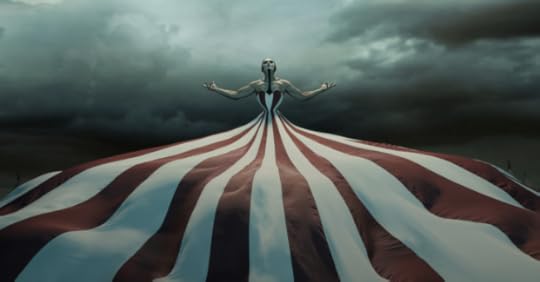
American Horror Story “Freak Show” on FX
This past Saturday I held my Bullies & Baddies class and a couple of the folks posited a really good question worth talking about. How do we write great villains? One of the reasons I love holding this class is that all stories require a core antagonist (who is responsible for generating the story problem in need of resolution), but there are different types of antagonists. All villains are antagonists but not all antagonists are villains.
But since we went there, what goes into creating a truly terrifying villain?
I watch a ton of movies and television series. I also read around three novels a week. I’m always studying, breaking stories apart so that I can understand them better. I do it for my fiction, but also so I can share what I learn with you guys.
Though the series isn’t for everyone (it’s pretty gory), I particularly love FX’s American Horror Story for studying villains. AHS is one of those shows that you have to get a few episodes into before you connect, namely because it is often cast with truly despicable characters.
It isn’t until you get a few episodes in that the writers start peeling back the layers and exposing the delicate undersides of the villains…and that’s when you really begin to care for them.
I know. Seriously. AHS is some of the best writing out there.
Jessica Lang almost always plays the core antagonist in each season of AHS (though she was absent in Season Five and it was evident). Of all the seasons, though, Season Four Freak Show was my favorite and that’s what I am going to use today. Btw, there is a bit of spoiler alert, but it’s necessary. So what do we do to really make the villain POP?
Give the Villain a Sympathetic Goal
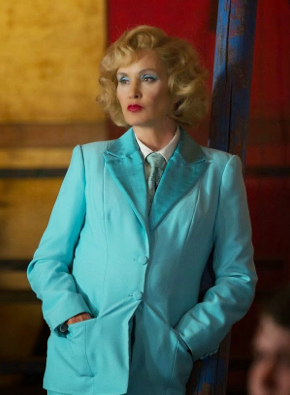
Elsa Mars (via FX)
In Season Four of AHS, Lang plays Elsa Mars. Mars is a self-centered, lying, conniving, murderous woman. But she is a deeply flawed and tragic character. Her goal is two-fold. First, she wants to become a star in Hollywood. Secondly, she wants to build the best Freak Show in the world.
As a young woman, Elsa is victimized by a man who promises her the starring role in a movie. What he fails to tell Elsa is she has the starring role in a snuff film. He films another man taking a buzz saw to both of Elsa’s legs then leaves her for dead. Through the sympathy and miraculous skill of an artist-sculptor, she’s saved and given life-like prosthetics and appears “normal.”
But this tragedy creates a horrible insecurity. She starts the Freak Show because deep down, she knows she’s a freak too. This makes her feel almost a maternal duty to collect the disfigured. To gather the tragic souls the world casts away and give them a home.
The Villain is the Hero of His/Her Own Story
Elsa is a mother figure. Under the circus tent, her “children” are stars and they are a family. She knows what life outside the show is like for a freak (she’s lived it). She also appreciates that she is a very different kind of freak. She has the ability to blend into society. Her children do not.
Make the Villain Conflicted
Mars is a very troubled and conflicted character. Her goal to take care of her charges and her desire to become famous in Hollywood are always in conflict. Also what makes Elsa so good is also what makes her so bad. She is relentlessly ambitious (good), but she is relentlessly ambitious (bad).
Remember that our best self and our worst self are often opposing edges of the same blade. This is true for protagonists (heroes) as well.
I see this even in myself. I have a compulsive personality. This is good (1000+ blogs), but can be very, very bad. I latch onto something like a pit bull and don’t let go…but sometimes I’ve latched onto something I should let go of (every ex-boyfriend ever).
As I like to say…
There is a fine line between persistent and stupid.
The reason this duality makes for a layered villain is that great fiction acts as a mirror and reflects a degree of reality back to the reader. When the reader sees the duality of the villain, she is also seeing the duality in herself. That is the part that can be deeply disturbing.
Maybe we believe we are incapable of murder, but are we really? Or have we simply been blessed with the right life circumstances that have permitted us to never have to really get an answer to that question?
Give the Villain Noble Goals
To dovetail off the last point I made, Elsa does some truly detestable things…but we do see there is a not-so-evil motivation behind her actions. Thus, we sympathize and I think that is one of the ways a good villain can truly get to us.
We see the ugliness in ourselves, the great evil we might be capable of in the right situation.
Elsa is profoundly insecure. It’s part of the reason she created the Freak Show to start with. If she owns and runs the show, she can be the main attraction. But again, Elsa’s goals collide with the intensity of a tectonic plate shift.
She knows the show has to make money because she clothes and feeds and shelters her “monsters”. But, to be blunt? She’s also greedy. So when another act overshadows her own? Her greed and her insecurity collide.
Make the Villain’s End a Sad Event

For me, the best villains are the ones we almost are silently rooting for and are really bothered by that. Elsa is one of those characters that in one episode you hate her and in the next you’re rooting for her and the end of the season is beautiful and tragic.
My friend NYTBSA James Rollins says he knows he’s done his job when the reader cries for the villain at the end.
This is also why NYTBSA Allison Brennan and I have had a long-running argument that Hannibal Lecter is actually not a villain but an antihero. Allison thinks he’s a villain, but I posit that Hannibal is written SO well, he actually transcends those boundaries and becomes the antihero.
Y’all KNOW you cheered at the end of Silence of the Lambs when he said he was “having an old friend for dinner.” And what is SO EPIC about this is that the guy he is going to eat is a law abiding citizen who technically has done nothing illegal…but we still are rooting for Hannibal (a serial killer).
And that freaks us out more than a little bit.
Another great villain? The Goblin King from Labyrinth. Every woman over the age of 30 is still wondering why the hell Sarah didn’t take the deal.

Now For This Little Slice…
There is another kind of villain, a villain who deeply upsets us and who’s end is a joyous event. We cheer. We don’t want this type of villain defeated. We don’t want them dead.
We want them OBLITERATED. Salt the very earth of their soul.
Michael Connelly’s The Lincoln Lawyer has the best example of this type of villain. The movie is great but the novel? O…M…G. The villain is positively terrifying.
Why?
Namely because this villain exemplifies what we fear most (and what protagonist Mickey Haller also fears).
That we won’t recognize pure evil when we see it.
At first glance, Roulet is the guy every girl would love to land. He’s smart, rich, handsome and charming. But is is a stone cold killer who exacts suffering for his own pleasure. What makes this character so disturbing is, like Haller, we believe Louis Roulet is innocent and that he’s been the victim of a terrible scam.
So when we hit that pivot point where we realize we’ve been duped? It rattles us to the core.
This type of villain will exhibit the same traits mentioned above, but they are all a deception. This villain is a venus flytrap who looks like a good guy but is only death disguised.
In The Lincoln Lawyer, Roulet has a sympathetic goal. He is an innocent man who’s been set up by a prostitute who is framing him so she can sue him for damages in civil court and use him as her ticket out of turning tricks.
Roulet is conflicted. He fails to share various pieces of vital information with his lawyer because he is “protecting his mother.” He doesn’t want to upset her and he cares deeply about her perception of him (I.e. he fails to mention he was going to Reggie Campo’s place to pay for sex).
Roulet has noble goals. For instance, he explains that the reason he carries a knife is because he discovered his mother (also a real estate agent) raped and brutalized in a home she was showing. He tells Haller that real estate agents often meet clients in homes alone and there is no real way to vet that they aren’t psychos (um irony), so he carries for protection.
Notice how Connelly hits on ALL the notes of a villain, but camouflages them as a hero.
THIS is why our world turns upside down when we realize it is all a lie. Roulet does not have a sympathetic goal at all! He’s a sado-mysogynistic killer and his only goal is to exact suffering…then destroy another man’s life by framing him for his crime.
This villain is not conflicted at all. He is very well aware of what he’s doing. He’s narcissistic and believes he is above the rules that govern society.
He does not have noble goals. His goals are as black as they come. This is why, unlike a villain like Elsa Mars, when Roulet meets his end? We cheer. In fact, regarding this, I actually prefer the ending in the movie where Roulet is badly beaten by Haller’s motorcycle gang clients before being hauled to jail.
A good way to make this kind of villain work is to create a deflection. Cast an innocent character as the “villain”. It is essentially a “bait and switch.” In the case of Roulet, the prostitute he brutalized carried the mantle of villain until Act Two.
What are your thoughts? Does this help you understand how to give depth to your villains? What are some of your favorite villains from the page or even the screen?
I LOVE hearing from you!
To prove it and show my love, for the month of MAY, everyone who leaves a comment I will put your name in a hat. If you comment and link back to my blog on your blog, you get your name in the hat twice. What do you win? The unvarnished truth from yours truly. I will pick a winner once a month and it will be a critique of the first 20 pages of your novel.
Upcoming Classes!!!
Remember that all WANA classes are recorded so if you miss, can’t make it or just want to refresh the material, this is included with purchase price. The classes are all virtual and all you need is a computer and an Internet connection to enjoy!
Hooking the Reader—Your First Five Pages MAY 14th. The first five pages are one of our best selling tools. We fail to hook the reader and that is a lost sale. In this class, we go over the art of great beginnings. Additionally, the upper levels Gold and Platinum I actually LOOK at your pages and critique your actual writing. I am offering DOUBLE PAGES for FREE so this is a fantastic opportunity to get feedback from a pro.
When Your Name Alone Can SELL—Branding for Authors MAY 16th. The single largest challenge all writers face in the digital age is discoverability. In a sea of infinite choices, connecting with our audience can be a nightmare. Our brand is our lifeline. What is a brand? How do we create one? How do we entice an overwhelmed and distracted audience to connect and care? How do we develop this brand over time? How can we make this brand resilient to upheavals? How can this brand then grow and evolve as we grow and evolve?
Blogging for Authors MAY 20th. Blogging is one of the most powerful forms of social media. Twitter could flitter and Facebook could fold but the blog will remain so long as we have an Internet. The blog has been going strong since the 90s and it’s one of the best ways to establish a brand and then harness the power of that brand to drive book sales.


May 4, 2016
Why Your Author Blog is Stuck & What To DO
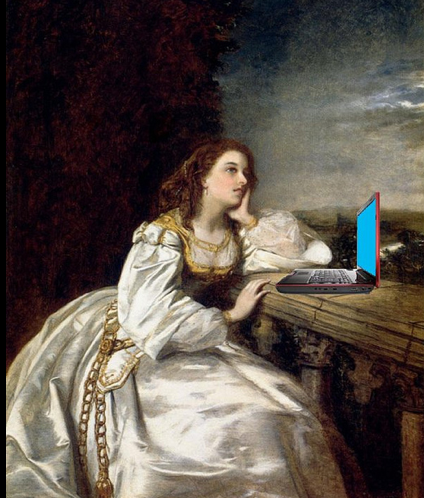
Image via Flickr Creative Commons, courtesy of Mike Licht
Ah the blog. Some of you might perk up at the word. Others? Blog sounds like some radioactive creature that hatched from a meteor and is only there to feed. Feed on your energy, your hopes and your dreams.
Many writers start the blog with high hopes, then a few months in? You can’t bear to go to your computer because the screen is a reminder of that shiny blog you started…then abandoned to the spam bots.
A blog done properly is one of the most powerful tools in our social media arsenal.
Twitter could flitter and Facebook could face plant, but the blog will remain. In fact, blogs have been going strong since the 90s and have taken over much of what used to be the sole territory of traditional media outlets. Additionally, blogging is the only form of social media that plays to a writer’s strengths.
Writers write.
Many writers get overwhelmed at the idea of a blog. But there are SO MANY blogs! Yes, there are. But don’t let that number fool you. Yes there are a gazillion blogs, but how many are any good? How many are consistent? How many have been abandoned?
When we blog properly, the competition isn’t nearly as bad as one might imagine.
What vexes me profoundly is when I attend classes on social media and blogging and witness eager authors listening to advice that frankly? Sucks. Not long ago, I literally walked out of a blogging class at a conference…namely because shutting up is not my strong suit.
So today, I want to outline some basics for you and get you asking and answering the correct questions before you begin to blog. If you want to know more about the author brand/blog I go into great detail in my book Rise of the Machines. I also have two classes coming up—Branding for Authors (May 16th) and Blogging for Authors (May 20th). This will keep this post a reasonable length because blogging is a vastly complex topic.
But the biggest question we need to ask in the beginning (before we get stuck) is….
What Kind of Blogger Do I Want to Be?
An Author Blog is Different
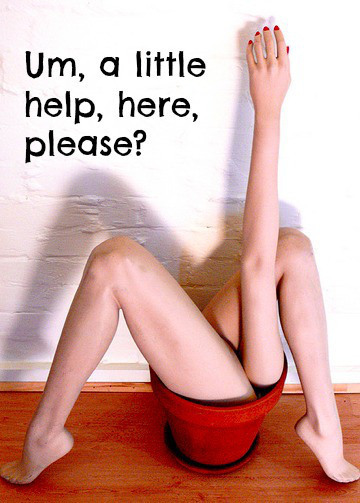
Image via Flickr Creative Commons, courtesy of Sally Jean
One thing I want all of you to understand is that the author blog is a distinctively different creature. Part of why I got so angry in the class I walked out of was because the expert failed to make the distinction and acted like a blog was a blog was a blog.
NO.
There is a HUGE difference between a blog and an author blog so you need to ask yourself this BIG question before you ever get started because it will impact everything that follows.
Is your goal to become a professional blogger? Or, is your goal to use your blog to build your author brand and eventually drive book sales?
There’s no wrong answer, but there is a vast difference in approach and planning. Often bloggers will use monikers. Think Scary Mommy, The Bloggess, or Pioneer Woman. For a blogger, this is perfectly fine since the goal is to build the BLOG and often the goal is to become big enough to be able to sell ad space.
If, however, you are wanting to be a successful author who blogs? A moniker makes your journey unnecessarily longer and harder and will only add layers of friction to your brand. The only acceptable author brand is the name printed on the front of your books.
People don’t like thinking and they’ve gotten really spoiled. If I spend years blogging as HappyFunGirl, then no one browsing novels would even notice Kristen Lamb because I branded the wrong name.
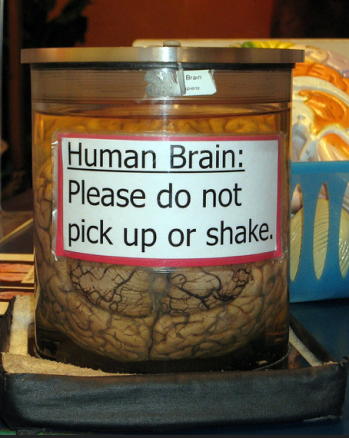
Image via Flickr Creative Commons courtesy of Steve and Shanon Lawson
There is another constraint worth mentioning. Content. Often blogs revolve around a particular area of interest—cooking, family, parenting, pets, etc. These are all non-fiction topics and stuff the left brain loooooves.
The problem is that authors are selling a right brain product (fiction). Why are we selling a right brain product with a left-brained brand? It’s bait that’s less than ideal. Again, it can work, but it isn’t connecting the way it needs to in order to cultivate a fan base for fiction.
Another problem when we start a subject-based blog? It’s easy to burn out (get stuck). An author blog gives us far more flexibility and freedom in our content that will keep us passionate about writing for years to come. We won’t feel chained to a subject that no longer interests us.

Courtesy of Imagens Evangelicas vis Flickr Creative Commons
Platform Matters

Why it is really critical to define our goals in the beginning is this is going to dictate where to build our blog. Any “expert” who says the only difference in a free platform and a paid platform is how many fonts, colors and backgrounds you have to choose from, doesn’t know her stuff.
The reason I’m a huge fan of the blog is the blog is a great way to drive book sales in a noninvasive way. We blog on something that catches interest, a reader clicks and likes and subscribes, and over in the corner, what do we have?
A shopping cart to BUY our books.
The entire reason I became a social media expert was I fell victim to the same bad advice I’m warning you of today. The same advice being given in 2016 in that class.
I didn’t know that the real difference in the FREE version and the PAID one had everything to do with BUSINESS.
In the FREE version, we cannot conduct commerce, which means no shopping cart. I didn’t know this in the beginning and it wasn’t until I had over 25,000 subscribers that I realized my mistake. By the time I had books for sale? There was no moving my followers, my 500+ blog posts and my tens of thousands of comments.
I had to start at GROUND ZERO if I moved. Yes, I was STUCK.

***Actually, WP now will allow me to move everything but I had to wait five years for the technology to catch up to my oops. I’ll be moving over the summer when things slow down. It will be way easier for me to have a shopping cart instead of having to hyperlink books and classes every post.
But here is the deal, I’ve done all the dumb stuff so you don’t have to. Plan for success and just invest the $100 in a paid site. You will thank me later
May 2, 2016
5 Reasons Your Story is Stuck

If you’ve been writing any amount of time you have been there—THE SUCK. This is where no matter how hard you try, you just cannot seem to move your story forward.
Though “normal” people might laugh at the above meme? Writers know that quicksand is freaking everywhere. You think you’re on firm footing and then down you go and the more you struggle, the worse it gets.
From personal experience combined with my experience with hundreds of writers the process can look like this.
Shiny Idea Time—You get the coolest idea ever conceived of and cannot believe such genius has never before been put to the page. It’s as if angels have come down and handed you a golden feather that will whisk you to the realms of literary nirvana.
First 20K Words—You’re flying high. You wonder why you ever had such difficulty with word count before. You cannot stop the flow. Perhaps you forget to eat, don’t want to sleep and you even dream of the world you’re creating.
20K-30K—This is when the pace begins to slow. It’s okay though. Perhaps you’re simply tired. It’s okay. This…THIS is the story idea you’ve been waiting for.
31K—Your pace slows dramatically. If you’ve ever been driving and suddenly had a flat tire? You know the feeling only this is in the brain-fingetips connection. There is a THWUMP, THWUMP, THWUMP…and your mental steering wheel jerks wildly. You might try to ignore, but eventually? You pull over to see what’s wrong.
But then? Nothing seems wrong. That’s weird. Mental tires all look properly aired. Maybe more caffeine is in order.

Perhaps you make it to 40K but by then? All the glitter is gone and you wonder what the hell happened. At this point, you likely will be visited by other story ideas. They see you on the side of the creative highway bewildered and seeming to need a ride. Though you don’t yet have your thumb out, these other newer and shinier ideas are quick to pull over and chirp, “Hop in!”
Just abandon that old clunker and GO!
It’s all so tempting. Especially since the longer you stay trying to fix your broken down WIP, the more shiny ideas come passing by. When you started your journey, the road was free and clear for you to floor your brain and write like the wind! Now? You can barely concentrate on where you placed your mental jack because temptation whizzes by every other minute.
I think this is a fairly accurate prediction regarding word count. If it weren’t then NaNoWriMo would be a cinch. But, alas, there is something about making it to 50K. It’s a number that leaves most who attempt such a feat broken down wondering what went wrong.

Image vis Flickr Creative Commons, courtesy of Yuya Sekiguchi.
Before you call a tow truck for the WIP and sell it for parts, I’d like to offer you some insight and maybe even some solutions to get you speeding down the Imagination Express once more.
Problem #1—The Antagonist is Weak or Nonexistent
This is one of the reasons I love teaching my Bullies and Baddies class (and yes we have one coming up SOON). After years of working with writers, it became clear to me that many didn’t understand—truly understand—the antagonist. It doesn’t help that a lot of the teaching on the subject can be terribly confusing.
I’ve heard classes where instructors used the term “antagonist” and “villain” interchangeably, but that is grossly inaccurate.
A villain is only ONE TYPE of antagonist.
All stories must have a strong core antagonist, because the antagonist is responsible for the story problem.
No antagonist, no story problem in need of solving. Too often, new writers spend an inordinate amount of time thinking about the hero and don’t give near enough thought to the opposition.
Problem #2—Plot Weak or Nonexistent
If a writer has failed to understand the antagonist (opposition) and truly know what this opposing force wants then the plot will simply disintegrate. When we’re crafting any work, we have to create a problem that is strong enough to bear the weight of the word count.
For instance, I’ve consulted many writers who had an excellent idea…for a short story. The problem was inherently too weak to sustain the bulk of a full-length novel.
Instead of plowing forward, often we can make some really simple adjustments to buttress that core idea. But if we don’t? It’s like trying to drive 90 pulling a crappy trailer. The wheels eventually WILL go flying off.
Often when we’re stuck, it’s the subconscious mind hitting the breaks. It’s trying to tell us our plot needs to be more robust or even clarified, which dovetails into my next point…
Problem #3—Too Many Ideas Crammed into One Book
Some writers might not have enough heft to the plot and others? Perhaps you’re loading on far too much. It’s not uncommon for me to talk to writers who are jammed up in a bad way only to find out they are trying to develop five ideas in one book.
Since the author failed to articulate what the book was about in ONE sentence (truly understand the antagonist’s agenda), then the author was at liberty to explore whatever cool rabbit trail presented itself.
This isn’t particularly bad, but it does require we STOP, get focused and maybe tease out those other ideas for subsequent books. You might think you only have one book, when you have two others freeloading and bogging down your momentum.
Problem #4—Wrong Protagonist
Casting the wrong protagonist is really easy to do, especially if we failed to properly develop the antagonist. Remember at the core of most great stories is an antagonist who’s essentially the shadow self of the protagonist.
For instance, in The Lincoln Lawyer Mickey Haller is a sleaze bag defense attorney. He represents drug dealers, pimps, prostitutes, and gang members. He has grown jaded with the justice system and prides himself on his ability to manipulate.

His greatest fear is representing a truly innocent man. What is the perfect story problem for such a character? Present him with an irresistible case that tosses him into what he fears the most.
Representing a truly innocent man.
This means that Connelly had to create a crime (case) where the client would undoubtedly look guilty and who would have enough cash to make Haller question any misgivings about taking on the case. Without a case where an innocent man is involved? The Lincoln Lawyer falls apart at the seams.
If Connelly had cast a lawyer who was all about truth, justice and the American Way? The plot would have been meh.
An attorney who works pro bono searching for truth is expected to risk everything to save the life of an innocent man. This would have been the wrong protagonist to cast for such a plot.
Fiction is the path of greatest resistance and Connelly, being a master, cast the one guy who probably would have run screaming from this case had he know was he was in for.
If your story seems to be sagging, check and make sure you’ve slated the right person for the job. Sometimes some quick fixes to who this character is or even giving that character some additional baggage might be enough to get you unstuck.
Problem #5—You Are Just Over Thinking

STOP IT! This is the one I am most guilty of. It’s why I am a HUGE fan of fast-drafting because then we simply don’t have time to over think every step we’ve made.
All writers have two different phases:
Oh, wow! I wrote that!
Oh. Wow…I wrote that.
We all think we are geniuses…only to later read the exact same section and become convinced we are little more than brain-damaged chimpanzees banging away on a keyboard. It happens, especially when we are in the thick of the story. It is tempting to go back and perfect, but resist the urge to go BACK. Feel free to correct typos or make notes (in a different color) but do not change your writing.
Your subconscious could be planting seeds and what looks like a weed might just be the greatest plot-twist EVER germinating. Just leave it alone and stop being so hard on yourself.
Remember, no unfinished-but-perfect book has ever hit the New York Times best-seller list, but a lot of crappy finished ones have





